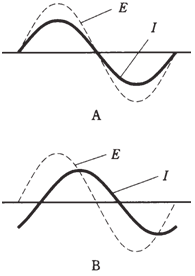Reactance does not consume power:
A coil or capacitor cannot dissipate power. The thing that such a component can do is store energy and then gives it back to circuit a fraction of a cycle later. In the real life, dielectrics or wires in coils or capacitors dissipate power as heat, but ideal components wont.
A capacitor, stores energy as an electric field. An inductor stores energy as a magnetic field.
A reactance causes ac current to shift in phase, so that it is no longer in step with the voltage. In the circuit with inductive reactance, current lags voltage up to 90 °, or one-quarter cycle. In a circuit with capacitive reactance, current leads voltage up to 90 °.
In a resistance reactance circuit, true power can be dissipated only in the resistive components. The reactive components cause the VA power to be exaggerated compared with true power.
Why does reactance creates this discrepancy between apparent (VA) power and true power? In the circuit which is purely resistive, voltage and current march right along in the step with each other, and thus, they combine in most efficient possible way. But in a circuit containing reactance, voltage and current do not work together as well due to their phase difference. Thus, the actual energy expenditure, or the true power, is not as great as product of voltage and current.

Figure-- At point A, current (I) and voltage (E) are in phase in a nonreactive ac circuit. At point B, I and E are not in phase when reactance is present.